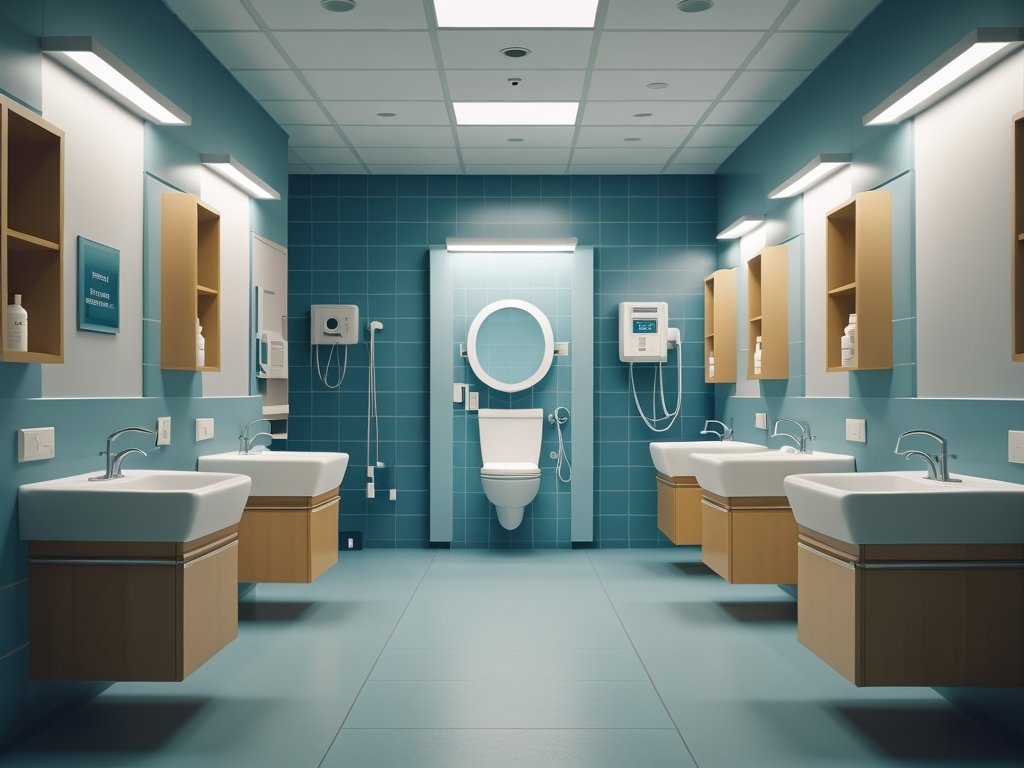Bathroom delays are an almost universal experience. Whether it’s a queue at work, a busy family home, or even just feeling unexpectedly urgent yourself, finding yourself needing the bathroom right now but being unable to access it immediately is surprisingly stressful. It taps into primal anxieties about loss of control and bodily functions, triggering a cascade of mental discomfort that can range from mild annoyance to full-blown panic. Most advice focuses on practical solutions – finding another restroom, distracting yourself physically – but often overlooks the internal experience. This article isn’t about avoiding the delay; it’s about navigating the mental landscape while you wait, equipping you with tools to stay grounded and calm when your bladder or bowels demand immediate attention, but circumstances dictate otherwise.
The key lies in understanding that a significant portion of our distress during these moments comes from internal escalation – our minds racing with “what ifs” and catastrophizing scenarios. It’s not necessarily the physical sensation itself (although discomfort is real), but rather the fear of losing control, embarrassment, or inconvenience that amplifies the experience. Learning to interrupt this mental spiral is a skill that benefits far beyond bathroom delays; it’s a core component of emotional regulation and resilience. This article will explore practical techniques for grounding yourself mentally during these unavoidable situations, offering strategies to reclaim a sense of calm amidst the urgency.
Understanding the Mental Escalation
The first step in managing mental distress during bathroom delays is recognizing why it feels so overwhelming. It’s not simply about needing to pee or poop; it’s deeply connected to our evolutionary history and psychological vulnerabilities. For millennia, loss of bodily control meant vulnerability – a threat to survival. While modern life rarely presents those kinds of threats, the brain still registers urgency as something potentially dangerous. This leads to heightened anxiety and an overestimation of consequences.
Furthermore, many people experience a feedback loop where worrying about not being able to get to a bathroom increases the sensation of urgency. The more you focus on the discomfort, the more intense it feels, creating a self-perpetuating cycle of anxiety and physical sensation. This is why distraction can sometimes work – but often only temporarily. True grounding requires addressing the underlying mental escalation rather than simply masking the symptoms. The goal isn’t to eliminate the urge, but to change your relationship with it. If you find yourself struggling with ongoing urgency, exploring mental resets during flow sensitivity days can offer additional support.
Finally, cultural norms around bodily functions play a role. Many societies place a high value on control and discretion, leading to shame or embarrassment associated with needing the bathroom. This social anxiety adds another layer of distress, making it harder to remain calm during delays. Recognizing these contributing factors – evolutionary hardwiring, anxiety feedback loops, and societal pressures – is crucial for developing effective coping strategies.
Grounding Techniques: Reclaiming Your Focus
Grounding techniques are essentially tools for bringing your attention back to the present moment, interrupting the cycle of anxious thought. They work by shifting your focus from future worries (what might happen) or past regrets (why this is happening now) to immediate sensory experiences. This doesn’t eliminate the urgency but creates mental space around it, reducing its power over you. There are many variations, and finding what works best for you is key.
One particularly effective technique is the “5-4-3-2-1” method. This involves consciously noticing:
* 5 things you can see. Really look at them – their color, shape, texture.
* 4 things you can touch. Feel the fabric of your clothing, the ground beneath your feet, or an object nearby.
* 3 things you can hear. Listen intently to the sounds around you – birds chirping, traffic, distant conversations.
* 2 things you can smell. Even if it’s just the faint scent of soap or coffee.
* 1 thing you can taste. This could be lingering flavor from a previous meal or simply noticing the taste in your mouth.
Another powerful technique is diaphragmatic breathing – deep, slow breaths that engage the diaphragm muscle. This activates the parasympathetic nervous system, which is responsible for calming the body and reducing stress. Focus on the rise and fall of your abdomen as you breathe, allowing yourself to be present with each inhale and exhale. Consistent practice of these techniques, even when not in a stressful situation, will make them more readily available when you need them most. For further calming support, consider exploring breathing exercises during bathroom delays.
Sensory Anchor Points
Sensory anchor points are about intentionally focusing on specific physical sensations to ground yourself. Unlike the 5-4-3-2-1 method which is broader, this involves choosing one or two strong sensory experiences and returning to them repeatedly. This could be:
* The feeling of your feet planted firmly on the ground. Visualize weight distribution and solidity.
* The texture of a piece of jewelry you’re wearing – tracing its shape with your fingers.
* A specific object nearby, like the smooth surface of a wall or the cool metal of a door handle.
The idea is to create a consistent point of reference that pulls your attention away from anxious thoughts and back into the present moment. This works particularly well because it’s less demanding than trying to analyze your feelings – you’re simply noticing sensation. It’s like having a mental safe harbor you can return to whenever anxiety starts to escalate. Remember, the power isn’t in eliminating the physical feeling but in shifting your focus away from the associated fear and worry.
Mental Reappraisal: Reframing Your Thoughts
While sensory grounding is powerful, it doesn’t always address the underlying thought patterns that contribute to distress. Mental reappraisal involves consciously challenging and reframing those thoughts. For example, instead of thinking “I absolutely cannot wait any longer – this is a disaster!”, you could reframe it as “This is uncomfortable, but I’ve dealt with similar situations before, and I can manage this.”
It’s important to avoid overly positive or unrealistic reframes (“Everything is wonderful!”). Instead, aim for more balanced and realistic perspectives. Another helpful approach is to question the catastrophic thinking: What is the worst that could realistically happen? Is it truly as bad as your anxiety is making it out to be? Often, the answer is no. The goal isn’t to eliminate negative thoughts entirely, but to reduce their power and influence. If you often struggle with these thought patterns in public settings, review strategies for reducing flow delay during public outings.
Progressive Muscle Relaxation (PMR) – A Mini-Version
Progressive muscle relaxation involves systematically tensing and releasing different muscle groups in the body. While a full PMR session can be time-consuming, even a mini-version can be helpful during bathroom delays. Focus on one or two key areas:
* Hands: Clench your fists tightly for 5 seconds, then release and notice the sensation of relaxation.
* Shoulders: Shrug your shoulders up towards your ears for 5 seconds, then release and let them drop.
* Legs: Tighten your leg muscles as if you were about to jump, hold for 5 seconds, and then release.
This not only provides a physical outlet for tension but also draws your attention away from anxious thoughts. It’s a subtle way to engage the body in a calming activity while waiting. It’s important to remember that PMR isn’t about achieving complete relaxation; it’s about noticing the difference between tension and release, which can help you become more aware of your body and its signals.
Learning to manage these feelings effectively can also translate into better daily habits. Consider how practicing mindful bathroom habits can improve your overall awareness and control. For those facing more consistent challenges, exploring daily anchoring techniques for flow sensitivity may be beneficial in building resilience.
Finally, remember that seeking support is a sign of strength, not weakness. If you’re struggling to manage anxiety or distress related to bathroom delays, consider reaching out to a healthcare professional. You can also learn more about staying present during difficult voiding moments and taking control of your mental wellbeing.





















